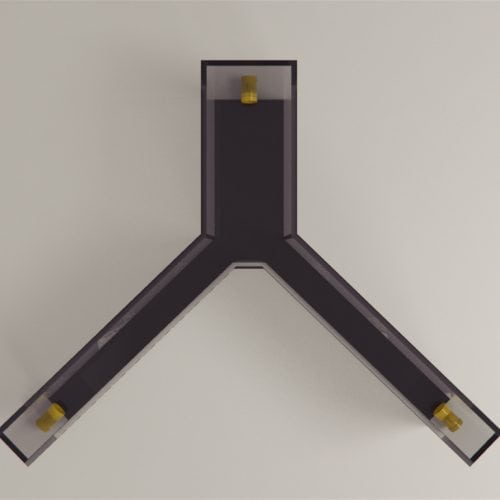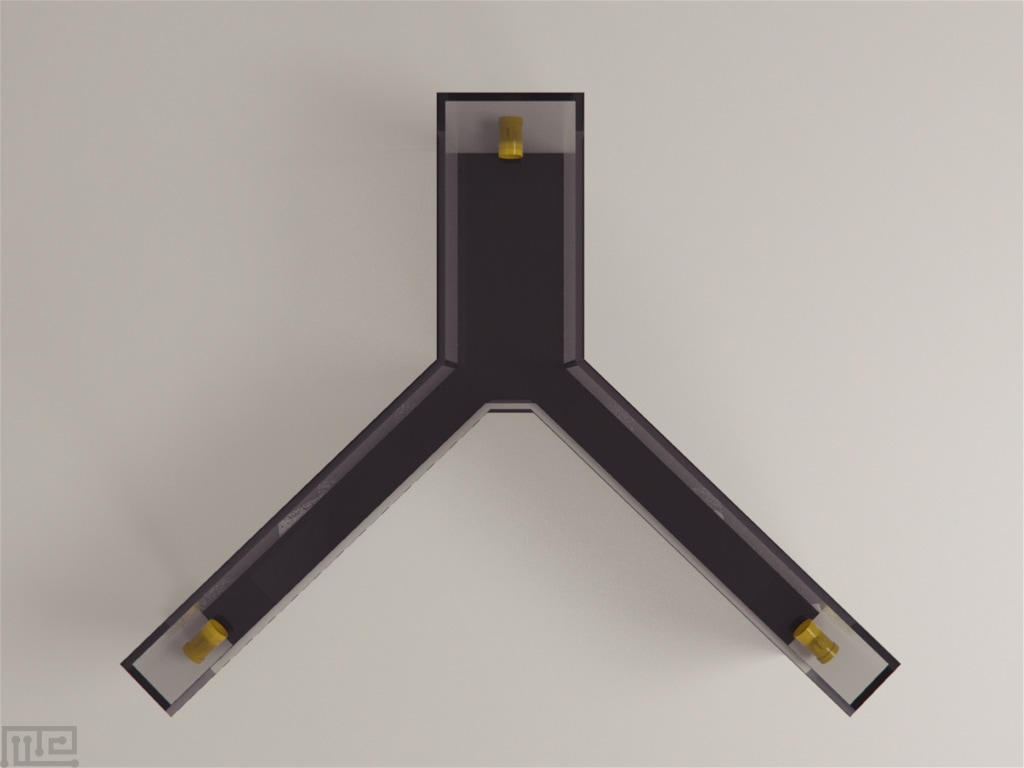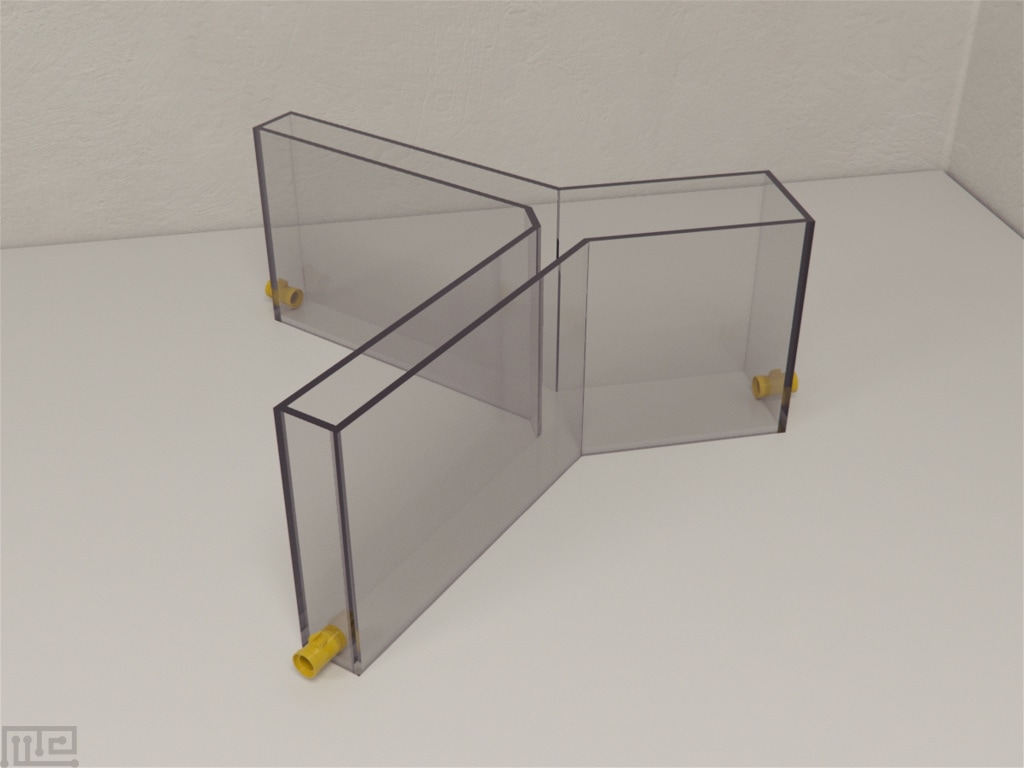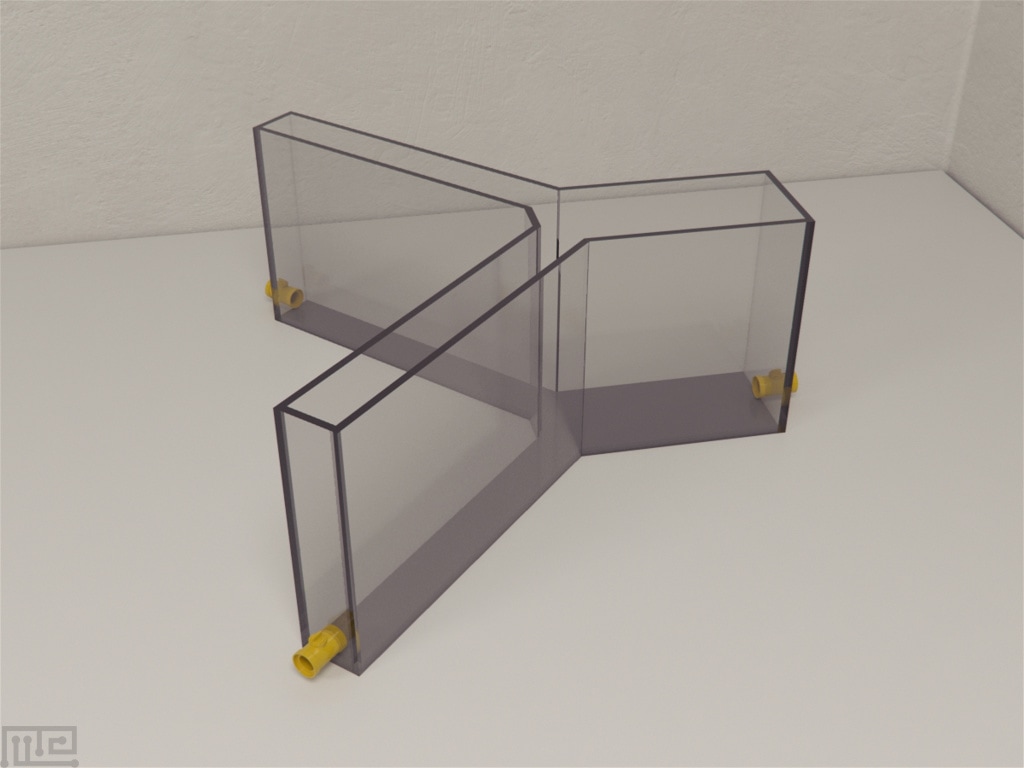Description
The flow-through Y-Maze is a modification of the Zebrafish Y-Maze. The flow-through Y-Maze apparatus consists of an aquatic tank shaped like a capital ‘Y.’ Two of the arms serve as the goal arms. The modification of the conventional aquatic Y-Maze involves the addition of the pressure controlling flow meters at each intake valve of the goal arms to control and measure the rate of flow of the fluids into the arms.
The Zebrafish Y-Maze is an adaptation of the rodent Y-Maze (also see T-Maze). The ‘Y’ design is preferred over the ‘T’ design due to its natural turns. Other Zebrafish based assays include the Zebrafish T-Maze, Zebrafish Three Chamber Choice, and Zebrafish Place Preference Test. (For more Zebrafish testing apparatus and equipment click here).
Price & Dimensions
Zebrafish
$ 1290
Per Month- 25 cm long, 8 cm wide and 15 cm high
Modifications

two 30 cm long
5 cm wide goal arms
height: 20 cm
polyethylene tubing (1 cm diameter)
Are you an academic scientist and creator?
Learn how your lab can tech transfer this and similar devices from your lab to industry.
Documentation
Apparatus and Equipment
The Y shaped maze is constructed using a transparent acrylic tank having a start arm 18 cm long and 10 cm wide. Each goal arm is 30 cm long and 5 cm wide. The height of the entire apparatus is 20 cm. All three arms are equipped with 1 cm diameter polyethylene tubing at the intake (goal arms) and outflow (start arm) openings. A flow meter at the intake opening is used to control and measure the flow rate of the fluids. The force of inflowing fluid can be created using elevated water cylinders (gravitation) connected to the tubing.
Training Protocol
The subjects should be housed in tanks that are maintained at constant temperature and pH value. It is advisable that these conditions be maintained throughout the sessions to avoid unnecessary harm or stress to the fish. It is also important to keep the water aerated and the quality of water maintained at an acceptable level.
The Y-Maze tank is filled with water to a height of 7 cm to avoid unnecessary stress on the fish during the trials. Place the Y-Maze tank inside a 50 cm tall opaque plastic box atop Styrofoam sheets to eliminate visual cues and vibrations. Illuminate the tank from above. Automated tracking and video software, such as the Noldus Ethovision XT, placed on the ceiling above the tank allows tracking and recording of the behaviors and movements of the fish. Between each subject empty the tank and thoroughly rinse it before next use.
Habituation and Behavioral testing
Individually expose the subjects to the maze for 10 minutes for 3 consecutive days. Begin behavioral testing by placing the subject behind a mesh sliding door in the start arm. Release the subject into the maze within 30 seconds, at the same time initiate the water flow. Terminate the testing when 5 minutes have elapsed and return the subject to its home tank.
Quantification of preference or avoidance in Y-Maze
To evaluate preferences and avoidance using the Y-Maze, subjects were tested with a positive stimulus and an aversive stimulus under two separate experiments. The positive stimulus was a tank of shoals consisting of conspecifics, similar in size and weight to the subjects, placed adjacent the wall of one of the goal arms. Denatonium benzoate was used as the aversive stimulus. The aversive stimulus was dispensed at a concentration of 2.5nM, and the flow rate was maintained at 0.4 cm/sec. For both the experimental conditions, the fishes were divided into two groups; one group that received the stimulus and the other group (control group) received no stimulus. Results revealed that that the subjects spent more time in the arm adjacent to the tank holding the shoals than when no shoals were present. In the aversive stimulus experiment, subjects were found spending more time (above chance value) in the freshwater arm than the arm containing denatonium benzoate. (Grella et al., 2010)
Evaluation of the effect of prior experiences with alcohol
Fishes were divided into 3 treatment groups: naïve, acutely treated and chronically treated. The naïve group received no alcohol while the acute group was exposed to 0.5% (v/v) alcohol an hour before Y-Maze testing. The chronic group started with an initial dose 0.125% (v/v) Alcohol in their holding tanks which was incrementally increased by 0.125% concentration once every four days. Once the target dose of 0.5% was achieved, the group was maintained at this dose for 2 weeks before the Y-Maze testing. The experimental set-up was achieved with one of the arms expelling 0.85% alcohol and the other arm expelling fresh water. The flow rate for the experiment was maintained at 3 cm/sec. In comparison to the other groups, the acute group spent smaller amounts of time in the alcohol arm, showed reduced activity and increased immobility. However, the test failed to quantify preference for alcohol in any of the treatment groups. (Grella et al., 2010)
Data Analysis
The following data can be observed in the flow-through Y-Maze tasks,
- Location of the subject in the arm
- Mean speed
- Percentage of swim time
- Percentage time spent immobile
- Percentage time spent in the goal
- Time spent in the arm
- Total distance
Strengths & Limitations
Strengths
The flow-through Y-Maze allows testing the subjects in an active choice task. The use of flow meter allows controlling the flow rate as per the requirements of the investigation. The Y-Maze design, as opposed to the T-Maze construct, provides a more natural path of movement for the subjects. The Y-Maze also allows quantification of preference and avoidance behaviors of the subjects in response to a stimulus
Limitations
The performance in the flow-through Y-Maze can be affected by disturbing external stimuli such as noise, vibration, and visual stimuli. Handling and habituation processes can also have an impact on the maze performance. It is also important to maintain an appropriate flow rate that does not overwhelm the subjects or lead to mixing of water-soluble stimuli from the goal arms.
Summary and Key Points
- The flow-through Y-Maze is a modification of the Zebrafish Y-Maze.
- The ‘Y’ shaped design uses a more natural turn angle.
- Flow meter allows controlling and measuring the flow rate of fluids.
- The flow-through Y-Maze can be effectively used to assess preference and avoidance behaviors in fishes.
- During testing, it is important to eliminate any disturbances that could potentially affect the subject’s performance.
- Handling and habituation process can also impact maze performance.
References
Grella, S. L, Kapur, N., & Gerlai, R. (2010). A Y-maze Choice Task Fails to Detect Alcohol Avoidance or Alcohol Preference in Zebrafish. International Journal of Comparative Psychology, 23(1).



